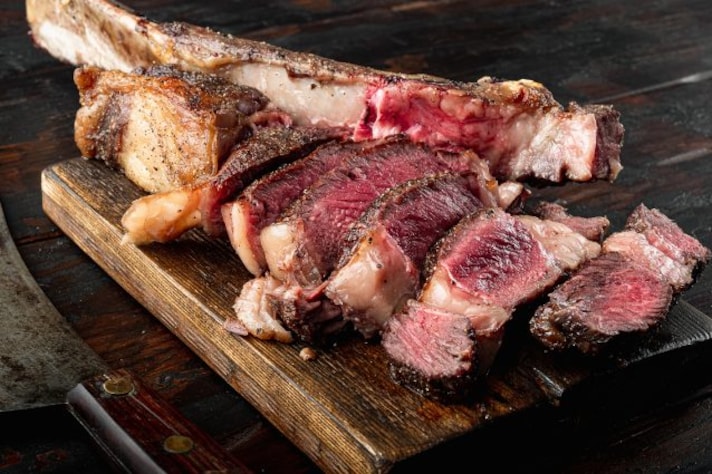
Diaframma steak, also known as "hanger steak" or "skirt steak," comes from the diaphragm muscle of the cow, located near the lower belly. Its rich marbling and coarse texture give it a distinctively bold flavor that sets it apart from other cuts. Popular in Italian and Latin American cuisines, diaframma steak is cherished for its tenderness and robust taste when cooked correctly.
How is Diaframma Steak Different from Other Cuts?
Unlike more common cuts like ribeye or sirloin, diaframma steak is leaner with a slightly chewier texture. However, its deep marbling means it’s still juicy when cooked properly. This cut is especially flavorful because it comes from a well-used muscle, giving it a more intense beefy taste. It’s an affordable alternative to pricier cuts and is ideal for recipes that emphasize flavor over tenderness, like tacos or stir-fry dishes.

How to Cook Diaframma Steak for the Best Flavor
This cut is best suited to quick, high-heat methods like grilling, searing, or broiling, as these methods lock in its juiciness without overcooking it. Here’s a basic guide to cooking diaframma steak:
- Prep the Steak: Season it generously with salt, pepper, and any favorite spices at least 30 minutes before cooking.
- High-Heat Cooking: Grill or pan-sear the steak on high heat for 3-5 minutes per side, depending on thickness and desired doneness. Aim for medium-rare to keep it juicy.
- Resting Period: Let the steak rest for 5-10 minutes after cooking. This step keeps the juices inside and enhances flavor.
- Slice Against the Grain: Cutting against the grain ensures each bite is tender and easy to chew.
Cooking Tips to Optimize Flavor
While diaframma steak is flavorful on its own, marinating it in a blend of acidic ingredients (like lime or vinegar) with garlic and herbs can add an extra layer of tenderness and depth. The robust flavor of diaframma steak pairs well with chimichurri, roasted vegetables, or a simple salad to balance its richness. Due to its unique texture, diaframma steak can become tough if overcooked, so it’s best enjoyed medium-rare.
;Resize,width=767;)
